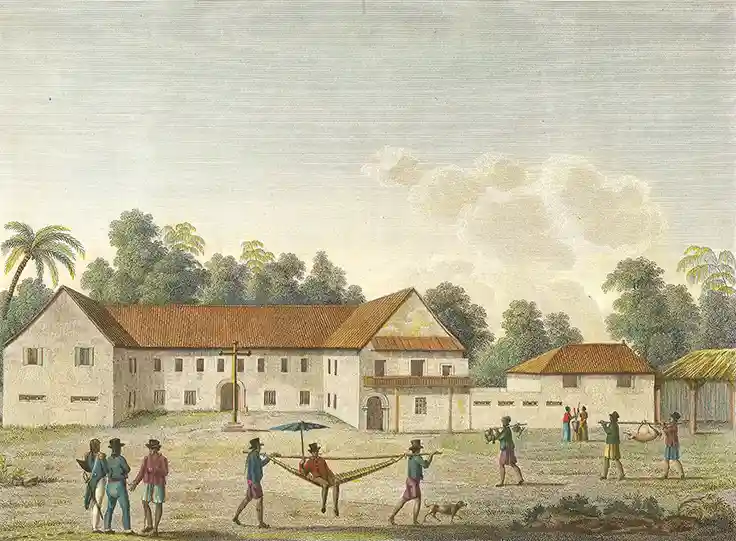Colegio de San Juan de Letrán

Boys school established in 1669
The Colegio de San Juan de Letrán, a boy’s school or seminary, was established in 1669 in Hagåtña by Father Diego Luis de San Vitores, the Jesuit priest who started the first Catholic mission in the Marianas, and was still in existence in 1899 when the Americans claimed the island. The funding for the institution came from an endowment (obra pia) from Queen Mariana of Austria, Spain’s queen regent. The school was located east of the church on the Plaza de España in Hagåtña.
The school was constructed initially with perishable materials such as thatch but succumbed to the elements. By 1679, a second structure was built to house the school, and it is believed that this building was constructed out of the more durable materials of stone masonry and a tile roof. In 1779, an earthquake devastated the school and was the catalyst for a new structure during Governor Phelipe de Ceraín’s administration. During the 1880s, Governor Francisco Olive y García described the school as U-shaped, constructed out of stone masonry with a tile roof, and able to accommodate up to 500 students.
The classrooms were located on the second floor where young men, ages four through eleven, received lessons in Christian doctrine, reading, writing, arithmetic, penmanship, Spanish grammar, geography, history, and good manners. By the mid-nineteenth century, the curriculum included music, ethics, carpentry, iron-working, and agriculture. The lessons were taught by two male teachers who were educated at the Normal School in Manila.
In 1844, the enrollment at the school was approximately 300-400 students, including thirty from outlying areas that were selected as scholarship recipients to attend the school. For those who were not scholarship recipients, their fathers were required to perform at least three days of community service for each child mandated to attend school. By 1886, 501 boys were enrolled at the school.
The school was repaired or rebuilt three times due to disrepair or destruction. In 1896, during the administration of Governor Emilio Galisteo y Brunenque, the school was relocated northwest of the Plaza de España and north of the Escuela de Niñas (Girls’ School).
The school was still under construction at it’s new site when the American administration assumed control of the island in 1899 and, at that time, the school was renamed the Richard P. Leary School after the first American naval Governor.
For further reading
Driver, Marjorie G. The Spanish Governor of the Mariana Islands and the Saga of the Palacio. Mangilao: Micronesian Area Research Center, University of Guam, 2005.
García, Francisco Olive y. The Mariana Islands, 1884-1887: Random Notes. 2nd ed. Translated and annotated by Marjorie G. Driver. Mangilao: Micronesian Area Research Center, University of Guam, 1984.
Ibañez y Garcia, Luis de. The History of the Marianas, with Navigational Data, and of the Caroline and Palau Islands: From the Time of their Discovery by Magellan in 1521 to the Present. Translated and annotated by Marjorie G. Driver. MARC Educational Series no. 12. Mangilao: Micronesian Area Research Center, University of Guam, 1992.
